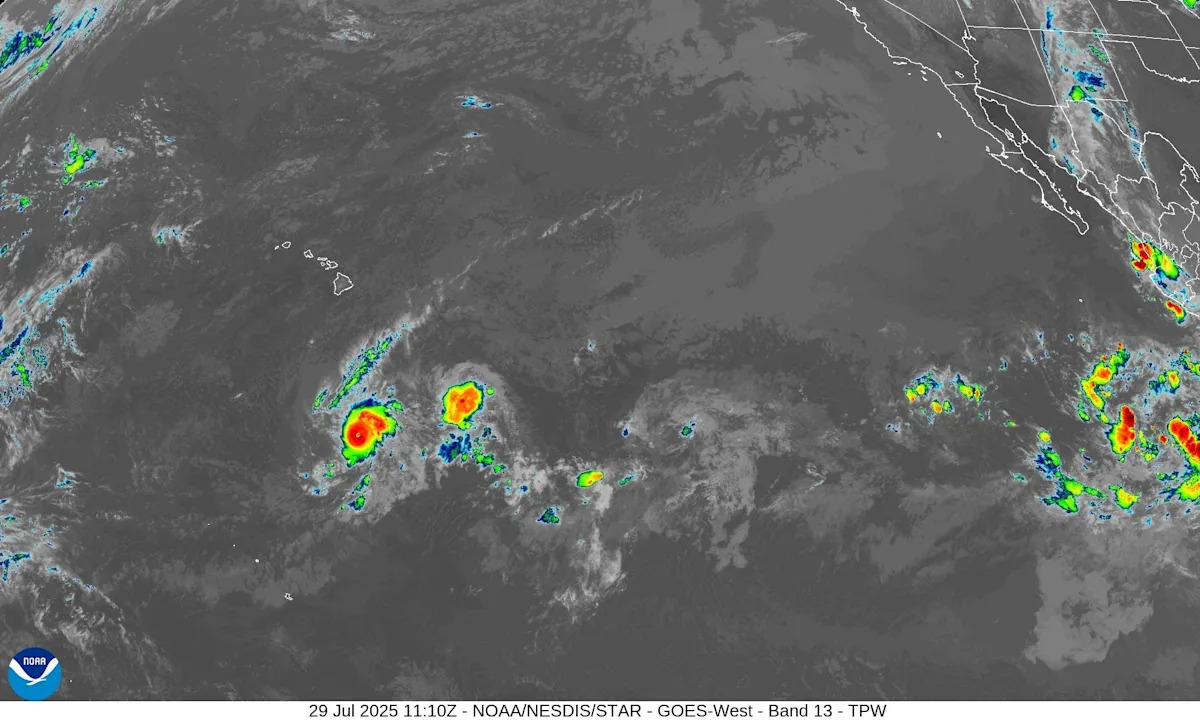Hurricane Iona Strengthens in the Pacific: What You Need to Know
As calm prevails in the Atlantic Ocean, the National Hurricane Center (NHC) is actively monitoring five systems in the Pacific, including Hurricane Iona and Tropical Storm Keli.
Hurricane Iona: Current Status
According to the NHC’s advisory on July 29, Hurricane Iona has intensified into a major hurricane, located approximately 765 miles south-southeast of Honolulu. With maximum sustained winds reaching 125 mph, Iona is classified as a Category 3 hurricane on the Saffir-Simpson scale, nearing Category 4 status. The storm is moving westward and is expected to maintain this trajectory while gradually increasing in speed over the next few days. Forecasters anticipate further strengthening on Tuesday night, followed by a steady weakening starting Wednesday.
Will Hurricane Iona Affect Hawaii?
Fortunately, no direct impacts from Hurricane Iona are expected on the Hawaiian Islands. However, AccuWeather warns that increased trade winds, combined with moderate drought conditions affecting over half of the islands, could elevate wildfire risks throughout the week.
Tropical Storm Keli and Other Disturbances
In addition to Iona, the NHC is tracking Tropical Storm Keli, located about 890 miles southeast of Honolulu. Keli has maximum sustained winds of 40 mph and is forecasted to continue moving westward with minimal changes in strength over the next few days.
The NHC is also monitoring an area of low pressure about 1,500 miles east-southeast of Hawaii, which has a 60% chance of developing into a tropical depression or storm in the coming days. Additionally, another system off the southern coast of Mexico has a 90% chance of formation, while a third area of low pressure south of Baja California has a 20% chance of developing.
Understanding Hurricane Formation
Hurricanes typically form in tropical regions over warm ocean waters. When water temperatures exceed 80 degrees Fahrenheit, clusters of thunderstorms can develop, potentially evolving into tropical waves or depressions. A tropical depression becomes a named storm when sustained winds reach 39 mph, and it is classified as a hurricane once winds hit 74 mph.
Preparing for Hurricane Season
As hurricane season progresses, it’s crucial to prepare adequately. The NOAA recommends the following steps:
- Develop an Evacuation Plan: Identify safe locations and routes in advance.
- Assemble Disaster Supplies: Ensure you have enough supplies for both the storm and its aftermath.
- Insurance Checkup: Review your insurance coverage, especially for flood insurance, which has a 30-day waiting period.
- Family Communication Plan: Establish meeting points and communication strategies.
- Strengthen Your Home: Take measures to fortify your home against potential hurricane impacts.
Conclusion
With Hurricane Iona and other systems developing in the Pacific, staying informed and prepared is essential. As we navigate through this hurricane season, proactive measures can significantly mitigate risks and ensure safety.
For ongoing updates, follow the National Hurricane Center and local weather advisories.
This article serves as a reminder of the importance of preparedness during hurricane season. By taking the necessary precautions now, individuals and families can better safeguard themselves against the unpredictable nature of hurricanes.

